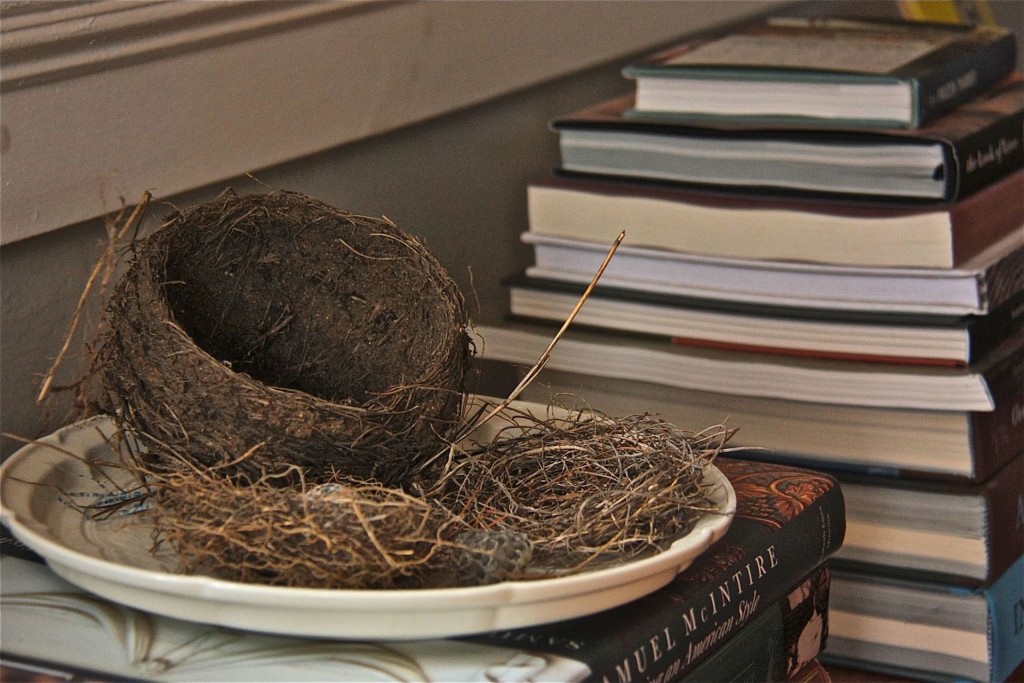Please welcome author Benison O’Reilly, who was kind enough to share this thought-provoking guest post with us today. Thanks, Benison!
Australia, where I live, has some unique bird and animal life. Of these, the kangaroo and koala need no introduction, but what about this little critter?
He’s called a bower bird. And I’m not being sexist calling the bower bird a ‘he’ because it really is the male of the species that’s the interesting one.
He creates a shelter (or bower) from long grass and collects colour-coordinated bric-a-brac to decorate it. There are several different species of bower bird; the guy in the picture is a satin bower bird and he likes blue things. The objective is to entice a female bower bird into his lair and hit on her, the way a New York bachelor might entice a young woman into his loft apartment to see his objet d’art.
My husband and I once spent a fascinating half-hour watching one of these fellows obsessive-compulsively arrange and rearrange his collection of feathers, aluminium foil and snippets of fabric, all in the hope of getting lucky.
As a writer I feel some affinity with the bower bird. I am a collector too. But just as everything we write is a collection of words and phrases and sentences, it is also a collection of ideas, memories and influences.
Stephen King writes in his wonderful memoir/writing guide, On Writing, good story ideas are born when ‘two unrelated ideas come together and make something new under the sun.’ The example he quotes to illustrate this is: poltergeists plus school bullying = Carrie.
Seems simple enough. Still, for years I doubted I’d ever be struck with divine inspiration until I heard an anecdote about an expat pilot and his wife and combined it with a short story I’d been struggling with, about an office romance. These two unrelated ideas came together to form my first novel, Happily Ever After?, published recently in Australia.
Mr. King was right.
Of course, a novel is more than that just plot. What other small treasures did I draw upon for themes, character and dialogue?
Here is a non-exhaustive list:
Cinderella (I’m not claiming any originality here); the British TV series Casanova; my former job in a pharmaceutical company; The Sopranos; conversations I’ve had with my husband; Shakespeare’s Othello; the best bits of some old boyfriends; my hometown Sydney; my tragic daydreaming younger self; Mr Brightside by The Killers; the heartbreak when my youngest son was diagnosed with autism; the hundreds of books—both good and bad—I’ve read over the years.
All are present in my novel in some form, along with the hours of research I undertook into the lives of pilots, the expat life in Hong Kong and adultery (the last meant for some interesting reading).
The message is that all writers need to be bower birds.
Undiscovered gems are scattered everywhere if you care to look. Keep your eyes and ears open and be disciplined, record everything. Carry a small notebook to record your impressions: the snippets of conversation you overhear, and scenes that strike you—not only visually—the smells, the sounds, the feel of sun, too. These details may not guarantee you your own Carrie, but they will add welcome authenticity to any stories you write.
And remember to jot down those brilliant ideas of yours— the ones you think you could never forget, but just may. (I’ve learnt this one from bitter experience.)
Collect enough ideas and inspiration, combine them in an original way, and who knows? Like the bower bird you might get lucky.
